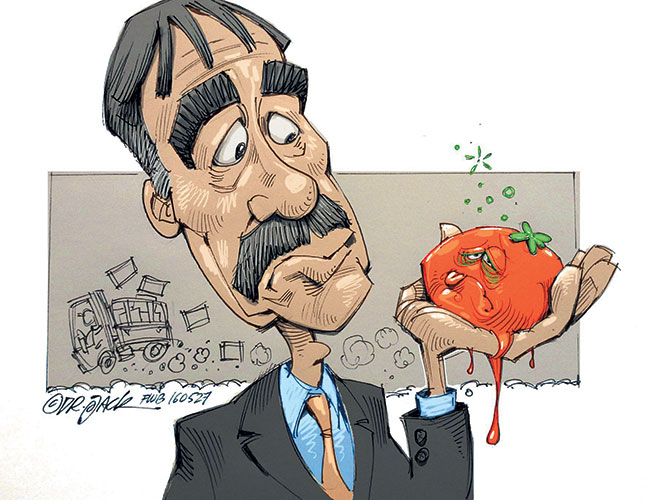
Rural roads usually have relatively low traffic volumes. Their contribution towards the generation of the national gross domestic product (GDP) is therefore seldom viewed as being of major importance.
READ:Continuity of supply to the markets
As part of a country’s transport infrastructure, rural roads are regarded more as accessibility providers than mobility providers – for example, enabling access to health and educational opportunities for local communities. Similarly, their economic role is at best seen as providing access for workers to the labour markets in larger towns and cities.
In a country’s major agricultural areas, however, the role of these rural roads is certainly not only to provide access, but to facilitate mobility for agricultural supplies to markets.
A road’s riding quality, and its effect on cargo
It is well known that a road’s condition affects the operation and costs of the vehicles that make use of it. While most vehicle operating cost (VOC) models provide an indication of the effects of a road’s condition on fuel consumption, additional vehicle damage and tyre wear, the models do not include the effects of road conditions on the condition and potential damage to the transported cargo.
A road’s riding quality – the smoothness of the ride – is used as the primary indication of the quality of a road. Findings indicate that road structure deterioration ultimately translates into a decrease in riding quality.
International Case Studies: Cargo damage
Under normal conditions, goods in transit are protected mainly by packaging. In the case of agricultural supplies, packaging is often not a solution to the problem; a major contributor to cargo damage is the use of older vehicles operating on rural roads with lower riding quality.
A number of projects have investigated and quantified the effects of the riding quality of low-volume roads on selected damage levels of tomatoes. These projects have revealed new insights into the issue of cargo damage as a result of poor rural road conditions.
These studies, carried out by researchers at the University of Pretoria, the California Department of Transportation, and the University of California in Davis, amongst others, measured the vehicles’ and cargo’s responses to road conditions during operations on several rural routes. The tomatoes’ ‘damage’ (lower price achieved) and ‘failure’ (failed to sell) levels were determined, and these levels were used to calculate typical costs to the agricultural supplier.
Various studies correlating the road riding quality and the vibrations, accelerations and responses in vehicles and cargo were conducted. The results generally concluded that a decrease in the riding quality of a road is a major cause of increased vibrations and subsequent structural damage to vehicles and cargo. This leads to direct negative economic effects for the farmer: increased transport costs, loss of market value of the transported cargo, and reduction in revenue.
Measuring the effect of rough roads on cargo
To quantify the relationship between the road condition (expressed as International Riding Quality [IRI]) and the truck’s and cargo’s responses (expressed in terms of the Coefficient of Variation [CoV] of vertical accelerations), the research ‘measured’ road condition.
Tracking these values shows the direct relationship between riding quality on a rural road and truck and cargo response. The relationship also took into account the time spent on a specific road, as longer trips would typically cause more damage to the cargo.
The studies showed that losses of up to 8% in income were incurred, as the tomatoes fetched lower prices and sometimes did not sell at all.
Using the results to maintain roads, and mitigate costs
The overall objective of studying the riding quality of rural roads is to enable better decisions on managing and
preserving the network. This is particularly important as such decisions have an economic effect on the road user. The information collected from these types of studies can be utilised in several manners for this particular purpose:
- It can assist road owners to develop cargo performance measurement indicators. In a specific country or region, this may be a combination of the expected damage to cargo transported on routes with poor riding quality, combined with the lower speeds that trucks typically travel on such routes, to indicate the potential economic effects.
- As the data provides for a quantifiable method to establish the additional cost of poor riding quality routes, road owners can develop policies on the provision and maintenance of agricultural routes, helping to minimise the economic losses incurred by farmers.
- Road users can make use of this data to conduct accurate evaluations of the maintenance costs that they can absorb through their own contributions to ensure lower damage levels to their cargo.
- Knowledge of the levels of road condition that are most damaging to the cargo in a specific area or region can be used to establish a system of road condition warning levels. These can be utilised to alert the road owner or agency in a timely manner of decreasing riding quality levels and the subsequent expected increase in agricultural cargo damage.
This article was originally published in the 03 June 2016 issue of Farmer’s Weekly.












